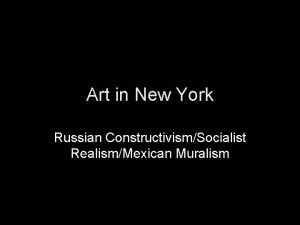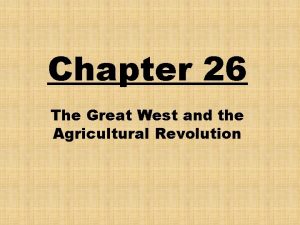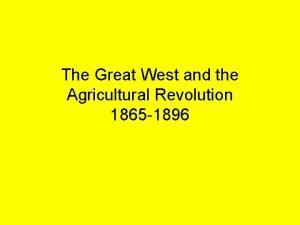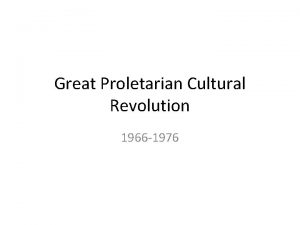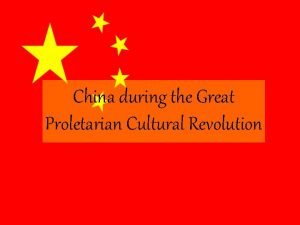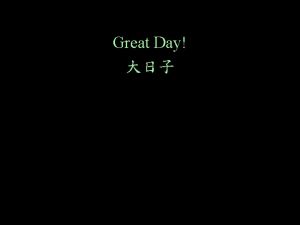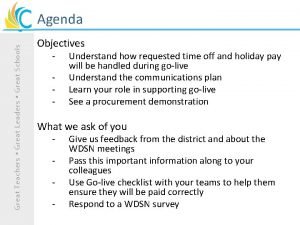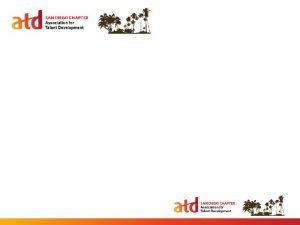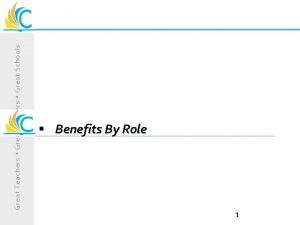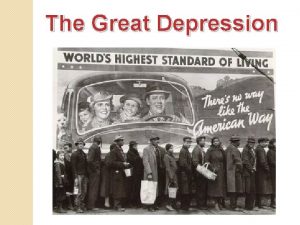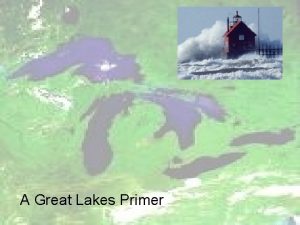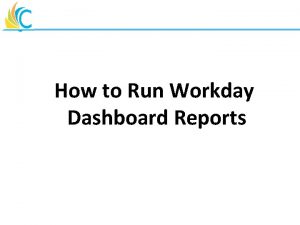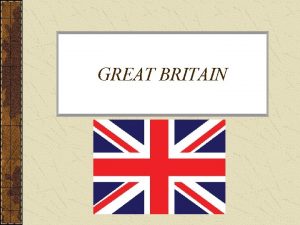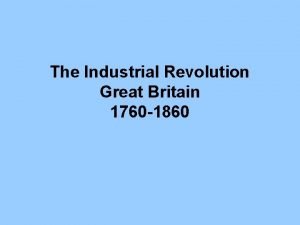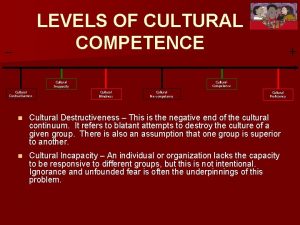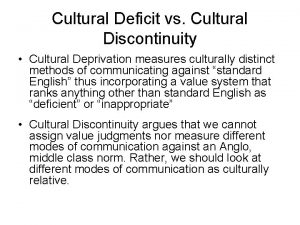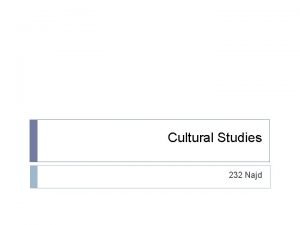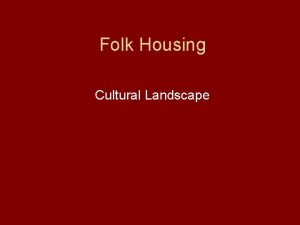The Great Proletarian Cultural Revolution Cultural Revolution and





























- Slides: 29

The Great Proletarian Cultural Revolution

Cultural Revolution and the study of non-democratic regimes ¡ ¡ ¡ Lack of institutional checks on political authority readily allows extreme policies Lack of institutionalized mechanisms to address policy debates, leadership transitions, and mass participation in politics can lead to violence, instability Risks of violating separation of civilian and military leadership l l ¡ Undermines military professionalism Increases threat of military coup Demonstration of interplay between domestic politics and foreign policy

How did Cultural Revolution (1966 -76) Proceed? ¡ Early 1960 s: Prelude l l ¡ 1966: CCP Central Committee “ 16 -point Decision” l ¡ l l unleashing of students and masses against CCP “Conservative” and “Radical” Red Guards Ended by sending 12 -18 million youth to rural areas 1969 -71: Civil-Military Conflict l l ¡ launches mass struggle “to topple those in power who are taking the capitalist road” 1966 -69: Mass Phase l ¡ Mao increasingly concerned about “revisionism” Mao supports series of campaigns to reassert Maoist values and priorities struggle between PLA and CCP Soviet threat: “Brezhnev Doctrine” 1971 -76: Party Conflict l l US-China rapproachment: Shanghai Communique 1972 struggle for dominance within CCP

Prelude to the Cultural Revolution ¡ factors shaping Mao’s thinking l “revisionism” in Soviet Union ¡ l “revisionism” in China ¡ l conflict over correct socialist path “capitalist tendencies” question of succession to Mao ¡ dissatisfaction with Liu Shaoqi Mao is worried about his legacy

Prelude to the Cultural Revolution ¡ Series of campaigns to reassert Maoist values and priorities l Socialist Education Movement, 1963 -66 ¡ l Learn from the PLA under Minister of Defense Lin Biao, 1963 ¡ l revive commune system in agriculture “red” (Cult of Mao—”Little Red Book”) and expert (nukes) Other campaigns in health, education, and culture ¡ ¡ ¡ Health: ex—doctors to the countryside Education: ex—integrating manual labor into curriculum Culture: Jiang Qing, Zhang Chunqiao, Yao Wenyuan Mao perceived that these campaigns failed because of obstructionism by Communist party apparatus


Primary Source Discussion: Sixteen-Point Decision August 1966 ¡ ¡ ¡ What is the goal of the “Great Proletarian Cultural Revolution”? Who is intended to carry out this revolution? Who is expected to resist? Is there evidence of a power struggle? Policy struggle? What is significant about the approach to policy or personnel change in terms of organizational politics?

Primary Source Discussion: Sixteen-Point Decision August 1966 ¡ ¡ ¡ What is the goal of the “Great Proletarian Cultural Revolution”? l “to topple those in power taking the capitalist road” l To attack “ 4 olds” (customs, habits, culture, thinking) Who is intended to carry out this revolution? l “the broad sectors of workers, peasants, soldiers…” Who is expected to resist? l those in the Party “taking the capitalist road” Is there evidence of a power struggle? Policy struggle? What is significant about the approach to policy or personnel change in terms of organizational politics?

What was the Cultural Revolution all about? ¡ At the elite level l power struggle over succession to Mao ¡ l i. e. , who would shape the future? struggle over correct vision/policies ¡ i. e. , what would the future look like?

Cultural Revolution Poster ¡ "Revolutionary factions of the proletariat, unite and arise. Struggle against the power of the black Tianjin Communist Party Committee. " Proclaimed by the United Revolutionary Rebel Committee of Artists and Writers, 1967

Battle Lines Drawn: Overview of the Political Spectrum as of 1969 Mao Radicals in Cult Rev Group PLA Lin Biao Mao’s secretary Chen Boda ∕ ∕ Surviving Moderates Ousted Moderates Zhou Enlai Liu Shaoqi* (d. 1969) Jiang Qing Deng Xiaoping* Kang Sheng Chen Yun Trained by NKVD Zhang Chunqiao Others Shanghai cult apparat Yao Wenyuan Shanghai lit crit *1967 house arrest

What was the Cultural Revolution all about? Mass Phase ¡ At the mass level l l “Conservative (Scarlet)” and “Radical” Red Guards opportunity for people to challenge social and economic cleavages created by the socialist system in China

What was the Cultural Revolution all about? Mass Phase ¡ Why so violent? l l Politics as only channel for social mobility Only opportunity to express discontent Mao’s charisma Transcendent mission of revolution ¡ Ends used to justify means

Review: How did Cultural Revolution (1966 -76) Proceed? ¡ 1966 -69: Mass Phase l l unleashing of students and masses against CCP “Conservative” and “Radical” Red Guards Collapse of party organization in some places Phase ended by sending youth to rural areas ¡ Mao: Red Guards had “failed him. ” ¡ 12 -18 million sent to countryside by 1971


Exercise of Power: 3 -in-1 revolutionary committees Address collapse of party authority ¡ Restore order, restore production, govern ¡ l l l 1: PLA (army) 2: CCP (“uncorrupted” party cadres) 3: Representatives of “the masses”

Exercise of Power: 3 -in-1 revolutionary committees PLA itself being drawn into conflict Local commanders closer to CCP Risk of splitting military—civil war?

Review: How did Cultural Revolution (1966 -76) Proceed? ¡ 1969 -71: Civil-Military Conflict l Struggle between PLA and CCP ¡ CCP l l l Seeks to rebuild itself Seeks to reassert primary of party over army Soviet threat: “Brezhnev Doctrine” ¡ PLA, l Lin Biao Dual threats from US, USSR ¡ Aggrandizes PLA ¡ CCP l l Talks with Kissinger (1971) PRC UN seat (1971)

Review: How did Cultural Revolution (1966 -76) Proceed? ¡ 1971 -76: Party Conflict Phase l US-China rapproachment ¡ Shanghai l Communique (1972) Struggle for dominance within CCP

Conflict over Policy: Radical Maoist Vision for China “Socialist new born things” education health industry culture agriculture party affairs ¡ Learn from Daqing (industry) ¡ Learn from Dazhai (agriculture) ¡ May 7 th Cadre Schools (party affairs) ¡

Conflict over Policy: Moderate Vision for China ¡ “Four Modernizations” (January 1975) l l Agriculture Industry Defense Science and technology Restore material incentives ¡ Introduce foreign technology ¡ Emphasize expertise ¡ Increase managerial authority ¡

Overview of the Political Spectrum as of 1969 (* = in Gang of Four, arrested 1976) Mao (d. 1976) Radicals in Cult Rev Group Chen Boda PLA Surviving Moderates Ousted Moderates Lin Biao (d. 1971) Zhou Enlai (d. 1976) Liu Shaoqi (d. 1969) Jiang Qing* Deng Xiaoping (V. Ch MAC’ 75) Mao brought back to reorganize PLA Kang Sheng Chen Yun Zhang Chunqiao* Others Yao Wenyuan* Mao Loyalists Wang Hongwen Hua Guofeng (“Whatever Faction”) Factory sec guard (Politburo 1973)*

Themes in analysis of Cultural Revolution Challenge norm of civilian control over military “party controls the gun” ¡ ¡ 9 th CCP Central Committee (1969) 45% military 8 th CCP Central Committee (1956) 29% military 1975 Mao brought Deng Xiaoping back to reorganize PLA l l l PLA Chief of Staff Military Affairs Commission, V. Chairman Politburo Standing Committee, V. Chairman Interplay of domestic and foreign policy Sino-US-Soviet relations ¡ ¡ Doctrinal disputes Soviet threat (Brezhnev Doctrine, border clashes) bigger PLA or turn to USA

Results of Cultural Revolution: Impact on Chinese Communist Party ¡ ¡ Organization of CCP undermined Absence of institutionalized succession processes dramatized l l ¡ Liu Shaoqi Lin Biao (Mao’s “close comrade-in-arms” and successor) Gang of Four Deng Xiaoping Legitimacy of CCP undermined

Results of Cultural Revolution: Impact on Chinese Society ¡ Youth l l l ¡ Workers (urban residents) l l l ¡ Wages stagnant Production very inefficient Personal tragedies Farmers (rural residents) l l ¡ Lost educational opportunities Personal tragedies By 1971, 12 -18 million “sent-down” youth Incomes stagnant Output per capita flat Society as whole l l Loss of cultural patrimony Estimated 10 million deaths

Any good results from Cultural Revolution? Broad-based provision of basic needs ¡ Unintended consequences— party/society more open to liberalizing reforms? ¡ Egalitarian starting point for reform ¡ Opportunities for women? —debate ¡

Looking Back at the Cultural Revolution ¡ "The dream that we had at that time is not finished. I don't regret that time. We made a sacrifice for our ideals. " — Shanghai Businessman ¡ "The Cultural Revolution was a barbaric and ignorant phenomenon. You couldn't have your own thoughts. If you didn't participate you would be criticized. . It was a Red Terror. " — Retired Government Worker Source: http: //www. washington. edu/burkemuseum/ordinarylife/intro_new. html

Cultural Revolution and the study of non-democratic regimes ¡ ¡ ¡ Lack of institutional checks on political authority readily allows extreme policies Lack of institutionalized mechanisms to address policy debates, leadership transitions, and mass participation in politics can lead to violence, instability Risks of violating separation of civilian and military leadership l l ¡ Undermines military professionalism Increases threat of military coup, civil war Demonstration of interplay between domestic politics and foreign policy

Totalitarianism defined ¡ Single charismatic leader ¡ Single dominant party ¡ Utopian, forward-looking ideology ¡ State control over all organized activity ¡ Mobilized participation ¡ Popular fear instilled by arbitrary terror
 Echo furry
Echo furry Chapter 26 the great west and the agricultural revolution
Chapter 26 the great west and the agricultural revolution The great west and the agricultural revolution
The great west and the agricultural revolution Russian revolution vs french revolution
Russian revolution vs french revolution Did american revolution cause french revolution
Did american revolution cause french revolution Third agricultural revolution
Third agricultural revolution Hình ảnh bộ gõ cơ thể búng tay
Hình ảnh bộ gõ cơ thể búng tay Frameset trong html5
Frameset trong html5 Bổ thể
Bổ thể Tỉ lệ cơ thể trẻ em
Tỉ lệ cơ thể trẻ em Gấu đi như thế nào
Gấu đi như thế nào Tư thế worms-breton
Tư thế worms-breton Hát lên người ơi alleluia
Hát lên người ơi alleluia Các môn thể thao bắt đầu bằng tiếng đua
Các môn thể thao bắt đầu bằng tiếng đua Thế nào là hệ số cao nhất
Thế nào là hệ số cao nhất Các châu lục và đại dương trên thế giới
Các châu lục và đại dương trên thế giới Cong thức tính động năng
Cong thức tính động năng Trời xanh đây là của chúng ta thể thơ
Trời xanh đây là của chúng ta thể thơ Mật thư tọa độ 5x5
Mật thư tọa độ 5x5 101012 bằng
101012 bằng độ dài liên kết
độ dài liên kết Các châu lục và đại dương trên thế giới
Các châu lục và đại dương trên thế giới Thể thơ truyền thống
Thể thơ truyền thống Quá trình desamine hóa có thể tạo ra
Quá trình desamine hóa có thể tạo ra Một số thể thơ truyền thống
Một số thể thơ truyền thống Bàn tay mà dây bẩn
Bàn tay mà dây bẩn Vẽ hình chiếu vuông góc của vật thể sau
Vẽ hình chiếu vuông góc của vật thể sau Thế nào là sự mỏi cơ
Thế nào là sự mỏi cơ đặc điểm cơ thể của người tối cổ
đặc điểm cơ thể của người tối cổ Thế nào là giọng cùng tên
Thế nào là giọng cùng tên
